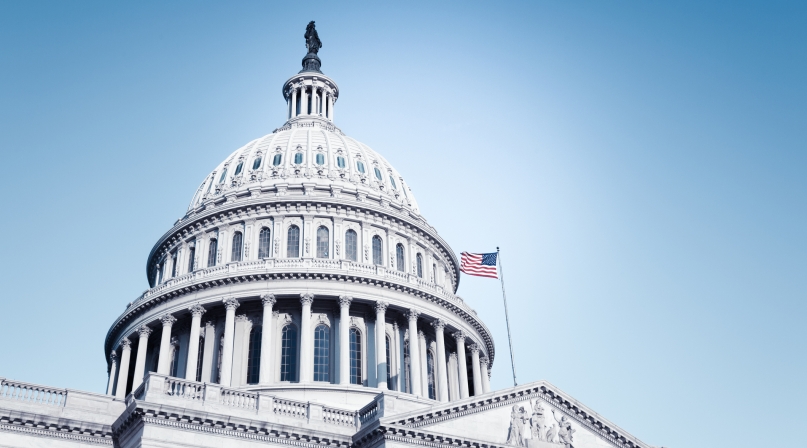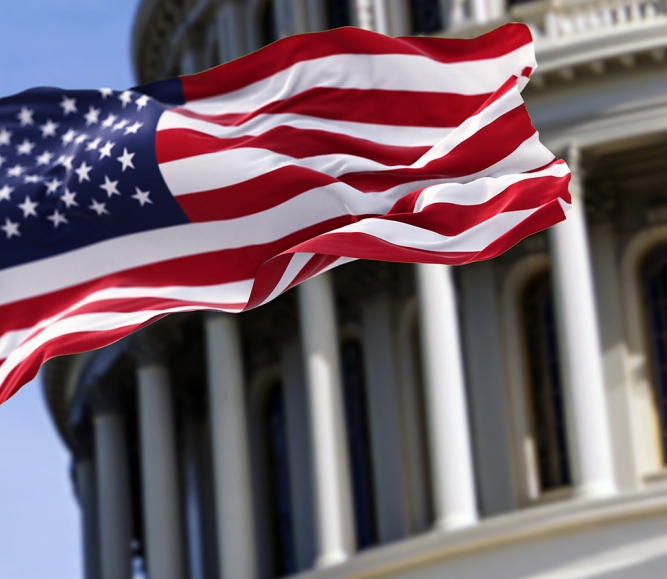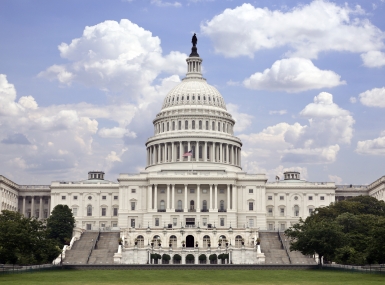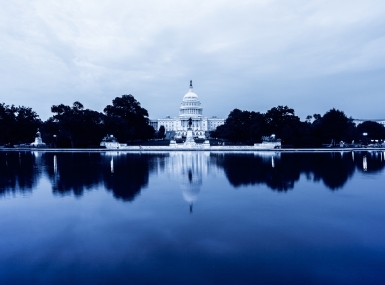Bipartisan, bicameral legislation would establish a new Fiscal Commission
Author

Paige Mellerio
Upcoming Events
Related News

Key Takeaways
In late 2023, Reps. Bill Huizenga (R-Mich.) and Scott Peters (D-Calif.) introduced the bipartisan Fiscal Commission Act (H.R. 5779), that would establish a fiscal commission within the U.S. Congress.
Companion legislation in the U.S. Senate, the Fiscal Stability Act (S. 3262) is being led by Sens. Joe Manchin (D-W.Va.) and Mitt Romney (R-Utah).
What would a Fiscal Commission do?
The proposed Fiscal Commission would be:
- Comprised of 16 members, 12 of which would be elected members of Congress and 4 would be outside experts:
- The Speaker of the House, House Minority Leader, Senate Majority Leader and Senate Minority Leader would each appoint 4 members – 3 from their chamber and party and 1 outside expert
- Tasked with reporting to Congress on policy recommendations to improve the long-term fiscal sustainability of the federal government, including recommendations to:
- stabilize the nation’s debt to Gross Domestic Product (GDP) ratio over 15 years
- improve the solvency of federal trust funds over 75 years
- Required to secure a simple majority vote among Commission members on the report of policy recommendations and proposed legislative text:
- Approved legislative language would receive expedited consideration in both the U.S. House and U.S. Senate
What could these policy recommendations look like?
Policy recommendations from a fiscal commission can take many forms, however, commission members would be required to make difficult decisions about how to raise revenue that could include budget cuts and tax reforms.
For example, the 2010 National Commission on Fiscal Responsibility and Reform (the Simpson-Bowles Commission) proposed eliminating the tax-exempt status of municipal bonds although the recommendation was never ultimately approved by the Commission.
What is the outlook?
Bipartisan support in Congress for the establishment of a new fiscal commission has grown since it was proposed in June 2023 during consideration of the bipartisan Fiscal Responsibility Act debt ceiling deal, although it ultimately was not included in the final bill.
- On January 18, the U.S. House Budget marked up H.R. 5779, reporting it favorably to the House Budget Committee by a vote of 22-12 meaning it could receive a floor vote in the U.S. House in the future
What are next steps?
Counties as intergovernmental partners are the recipients of billions of federal dollars each year. NACo is monitoring the developments of this proposal and will keep members informed.
Resource
Legislative Analysis for Counties: The Fiscal Responsibility Act of 2023

Related News

County Countdown – Dec. 15, 2025
Every other week, NACo's County Countdown reviews top federal policy advocacy items with an eye towards counties and the intergovernmental partnership.

U.S. Congress passes reconciliation bill: What it means for counties
On July 3, the U.S. Congress passed sweeping budget reconciliation legislation.

U.S. Senate passes amended reconciliation bill text: What it means for counties
On July 1, the U.S. Senate narrowly passed their version of sweeping budget reconciliation legislation.